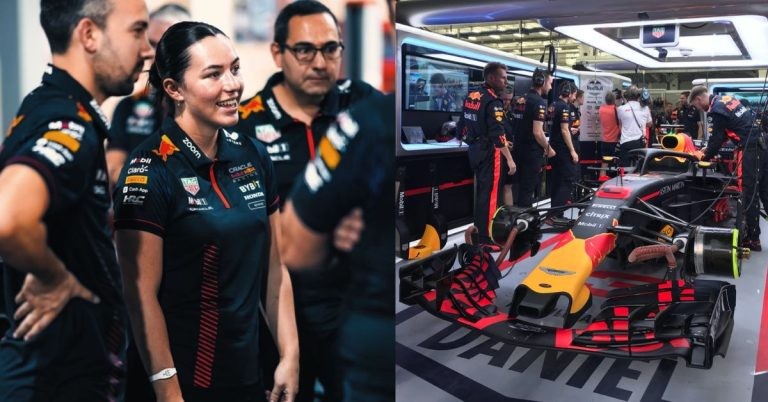Since the Abu Dhabi Grand Prix 2021, there has been a huge paradigm shift in power dynamics on the grid. Mercedes-AMG Petronas F1 Team, which had been dominating the sport since the beginning of the turbo-hybrid V6 era was dethroned as the only competitor for the title every year and was replaced by Oracle Red Bull Racing.
Lewis Hamilton, who joined Mercedes in 2013, took the team to heights never witnessed in Formula 1. The driver from Stevenage won 6 titles with Mercedes and his teammate, Nico Rosberg clenched the WDC title in the 2016 season. From 2014 to 2021 Mercedes won all the WDC and WCC titles.
But since the Abu Dhabi Grand Prix 2021, we have come to see a new Red Bull emerge with Christian Horner at the helm, who gave full support to their golden boy, Max Verstappen. Verstappen edged out Hamilton dramatically in the last lap of the race, he was on new slicks in 2nd position and Hamilton was leading the race. Nicholas Latifi’s crash allowed the lapped cars between Hamilton and Verstappen to unlap themselves.
A dream come true for @Max33Verstappen as he crosses the line in Abu Dhabi 👀
And becomes F1 World Champion for the first time! 👑 🏆#AbuDhabiGP 🇦🇪 #F1 pic.twitter.com/DIF51TL6Sk
— Formula 1 (@F1) December 12, 2021
This let Verstappen overtake Hamilton, in quite a spectacular fashion. This resulted in two things, firstly, it resulted in FIA race director Michael Masi getting fired, and secondly, the rise of Red Bull.
There are four reasons why Red Bull was hugely successful in 2022. Design, strategy, drivers, and incompetency of the other constructors.
Red Bull’s design in 2022-23
In design, Red Bull Racing revolutionized Formula One suspension design in the 2009-2021 era with its pull-rod rear suspension and push-rod front suspension layout. However, for the 2022 season, Red Bull opted for a push-rod rear suspension and pull-rod front suspension to accommodate the enlarged diffuser. The team also utilized a Belleville spring to add compliance to the car’s bib region, resulting in less vibration and bouncing than its rivals.
🚨 The RB19 will be revealed this week 🚨
— Oracle Red Bull Racing (@redbullracing) January 30, 2023
Red Bull has made several updates to the RB18’s bodywork throughout the season to balance cooling demands and aerodynamic output. The team has also made changes to the front wing and beam wing arrangement to adjust the car’s downforce and drag targets for different circuits.
Red Bull strategy in 2022-23
From the point of view of strategy, Hannah Schmitz, Red Bull’s Principal Strategy Engineer, has revealed how the team’s strategic decisions helped Max Verstappen secure a victory in the Hungarian Grand Prix, extending his championship lead by 80 points. Schmitz explained that the decision to start on Soft tires, rather than the harder option, was partly due to feedback from the drivers on the pre-race lap, which suggested that the Soft tires would be better in cool and damp conditions. The team’s decision to undercut the leading cars with a pit stop also played a crucial role in securing Verstappen’s lead.
Hannah Schmitz gives a detailed insight into Red Bull’s strategy decisions before and during the Hungarian Grand Prix 🔎 pic.twitter.com/s7M2CQiSBL
— Sky Sports F1 (@SkySportsF1) August 1, 2022
In contrast, Ferrari’s tire strategy came under scrutiny, as they opted to run two sets of Mediums and switch to Hard tires during the race, which ultimately backfired for Charles Leclerc, who finished in sixth place. Schmitz suggested that Ferrari’s final tire choice was a “tricky” one, as they had only the Hard or Soft options left, and that their decision to start on Mediums put them at a disadvantage. Schmitz added that Red Bull’s two sets of Mediums proved to be the best race tire by a considerable margin.
Red Bull so far in 2023 and expectations
The Bahrain Grand Prix saw Red Bull use a different tire strategy than their competitors, opting for a soft/soft/hard sequence instead of the common soft/hard/hard combination. Red Bull was able to do this because their car had an inherent pace advantage even when managing the tires. They did not want to expose themselves to a safety car by using the hard compound, which takes longer to get back up to temperature.
Max Verstappen WINS the 2023 Bahrain Grand Prix! 💥 pic.twitter.com/NG5RbftD7R
— Sky Sports F1 (@SkySportsF1) March 5, 2023
The other teams preferred the hard tire because they did not have to conserve the pace as much to get the required stint lengths, unlike the faster but more heat-degrading soft tire. The tire limitation around Bahrain’s Sakhir track is the thermal degradation of the rears due to constant stress and heat. Williams used the soft/soft/hard strategy to maximize track position and defend their slower car.
The medium C2 tire was not used because the new C1 tire was simply faster and more durable around Bahrain.7X WDC champion at Mercedes, Lewis Hamilton has spoken about the RB19 and that it is ‘the fastest’ car he’s ever seen in Formula 1.
The season looks quite easy for Red Bull now, with a potential for an internal struggle between Max Verstappen and Perez. They stand 1 point apart at 44 and 43 respectively and have more or less no competition from the rest of the grid. Ferrari does seem like they have the pace, but it seems like with their reliability issues, the only ‘competition’ they are going to have is from Fernando Alonso at Aston Martin.
UPDATED STANDINGS
Aston Martin and Mercedes draw level in the team standings after our points re-shuffle 👀#SaudiArabianGP pic.twitter.com/BoAmBrH4aX
— Formula 1 (@F1) March 19, 2023
The season is 23 races long, and it is bold to predict the future, but it is safe to say that Red Bull will dominate the rest of the season giving the fans an entertaining challenge for the 2nd spot with Mercedes, Aston Martin and Ferrari competing for it.










